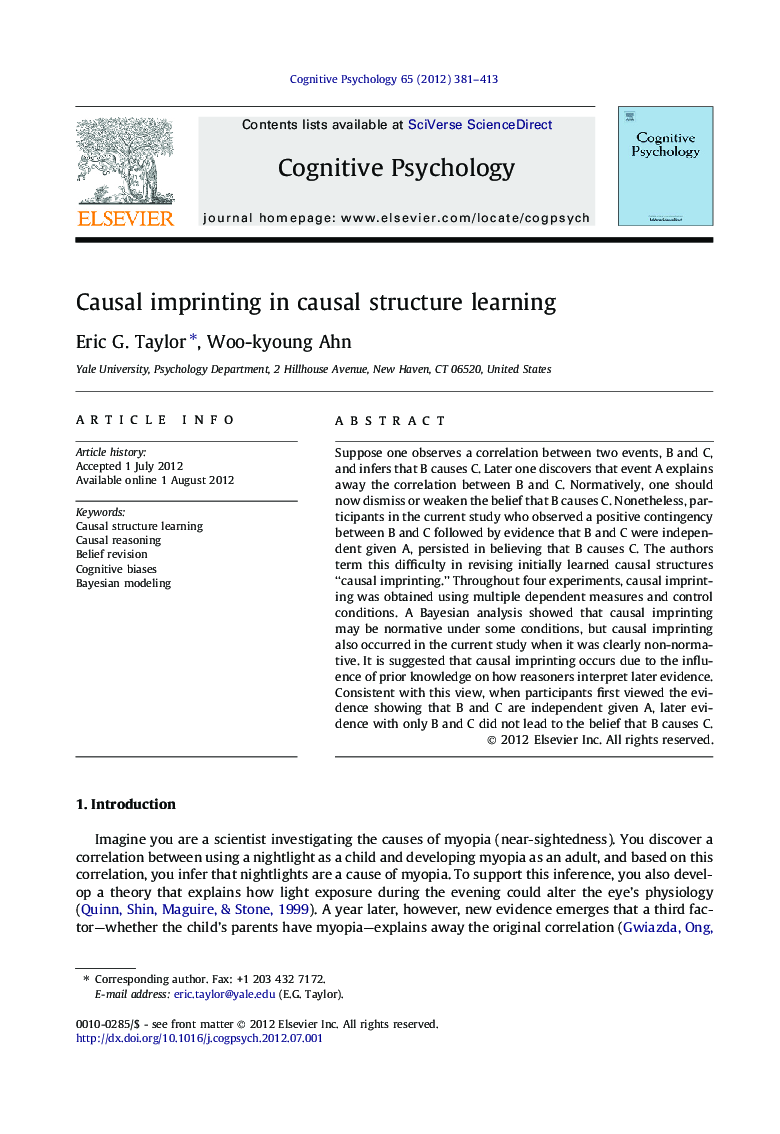| Article ID | Journal | Published Year | Pages | File Type |
|---|---|---|---|---|
| 916899 | Cognitive Psychology | 2012 | 33 Pages |
Suppose one observes a correlation between two events, B and C, and infers that B causes C. Later one discovers that event A explains away the correlation between B and C. Normatively, one should now dismiss or weaken the belief that B causes C. Nonetheless, participants in the current study who observed a positive contingency between B and C followed by evidence that B and C were independent given A, persisted in believing that B causes C. The authors term this difficulty in revising initially learned causal structures “causal imprinting.” Throughout four experiments, causal imprinting was obtained using multiple dependent measures and control conditions. A Bayesian analysis showed that causal imprinting may be normative under some conditions, but causal imprinting also occurred in the current study when it was clearly non-normative. It is suggested that causal imprinting occurs due to the influence of prior knowledge on how reasoners interpret later evidence. Consistent with this view, when participants first viewed the evidence showing that B and C are independent given A, later evidence with only B and C did not lead to the belief that B causes C.
► Oftentimes, correlations do not imply causality because of a common cause. ► People viewed a correlation between two effects, then evidence of the common cause. ► Despite the common cause, people still believed that one effect caused the other. ► This failure to revise was non-normative in light of several Bayesian analyses.
